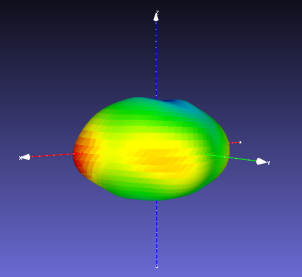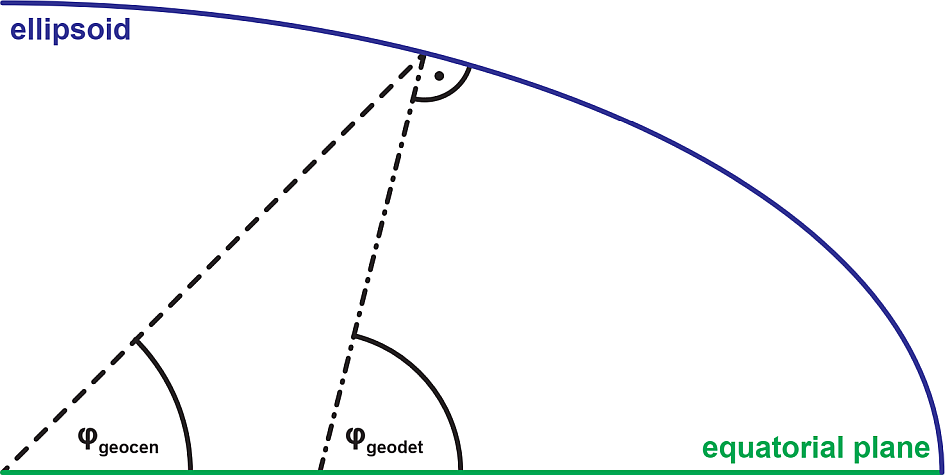Minimizing distortion introduced by Psyche’s ellipsoidal shape in cartographic products
- 1German Aerospace Center (DLR), Asteroids and Comets, Berlin, Germany (katharina.otto@dlr.de)
- 2Arizona State University (ASU), Tempe, Arizona, USA
- 3Free University Berlin (FUB), Berlin, Germany
- 4Jet Propulsion Laboratory (JPL), Pasadena, California, USA
- 5Southwest Research Institute (SwRI), Boulder, Colorado, USA
- 6Massachusetts Institute of Technology (MIT), Cambridge, Massachusetts, USA
- *A full list of authors appears at the end of the abstract
After its successful launch in October 2023, the NASA Psyche mission is currently on its way to asteroid (16) Psyche where it will arrive in 2029. Psyche is the first metal-rich asteroid to be orbited by a spacecraft (Elkins-Tanton et al., 2016). Thus, the Psyche mission plans a detailed geologic and morphologic survey of the asteroid (Jaumann et al., 2022) supported by an extensive imaging campaign conducted by the Psyche Multispectral Imager (Bell et al., 2016; Polanskey et al., 2018). Previous space missions, in particular the Dawn mission at asteroid Vesta (Russell et al., 2013), provide a base for the science and mission operations to collect the desired data (Polanskey et al., 2018).
High quality data products including, mosaics and digital terrain models are vital to perform a geologic and geomorphologic analysis, however Psyche is an irregularly shaped body (Shepard et al., 2021) (Figure 1) that makes the illustration and interpretation of such data challenging. Psyche can approximately be described by a bi-axial ellipsoid with axes of 129 km and 86 km (Shepard et al., 2021), resulting in a flattening of 0.33 (the flattening is defined as , where and are the semi-major and semi-minor axes, respectively). As comparison, the also ellipsoidal asteroid Vesta has a flattening of 0.20 with bi-axial axes of 285 km and 229 km.

Figure 1: Psyche’s shape from Shepard et al. 2021. The colours illustrate the surface’s distance from the centre with red and blue indicating high and low values, respectively.
The Dawn mission conducted an extensive mapping campaign at Vesta (Williams et al. 2014) and although the digital terrain models were referenced to the best fit ellipsoid describing Vesta’s shape, the cartographic products (e.g. maps) were usually presented in a geocentric projection (Roatsch et al. 2012, 2013). This means that images of the surface of Vesta were projected onto a sphere of 255 km radius before being map projected. Although this approach is straight forward and did not hinder the geologic interpretation, the surface images are distorted. As a consequence, measuring feature lengths, such as crater diameters, is incorrect, albeit often negligible in the case of Vesta. However, distortion effects will be significantly increased if such techniques are being applied to even flatter Psyche.
To mitigate such distortion effects on Psyche, one could use a mapping tool that enables mapping directly on the three-dimensional surface (Ernst et al.). However, to make use of the full capacity of the data, it is desirable to generate map products that can be used in standard geoinformation systems, such as QGIS. For such tools, a suited image projection needs be applied, that incorporates the ellipsoidal shape of Psyche. An improvement on distortion can be achieved when applying a geodetic projection, which projects surface images though an ellipsoid’s surface normal rather than a central point (Figure 2).

Figure 2: Illustration of the geocentric and geodetic latitude of a point on the surface of an ellipsoid.
In this work, we will access the effects of Psyche’s ellipsoidal shape on producing and interpreting cartographic products. As a guide to the future generation of Psyche cartographic products, we will show how potential surface features and measurements on Psyche in geocentric projection will be distorted compared to geodetic projections.
References:
Bell, J., et al., 2016. The Psyche Multispectral Imager Investigation: Characterizing the Geology, Topography, and Compositional Properties of a Metallic World. Presented at the 47th Lunar and Planetary Science Conference, The Woodlands, TX, USA, #1366.
Elkins-Tanton, L.T., et al., 2016. Asteroid (16) Psyche: The Science of Visiting a Metal World. Presented at the 47th Lunar and Planetary Science Conference, Woodlands, Texas, USA, #1631.
Ernst, C.M., et al., 2018. The Small Body Mapping Tool (SBMT) for Accessing, Visualizing, and Analyzing Spacecraft Data in Three Dimensions, in: 49th Lunar and Planetary Science Conference. Presented at the 49th Lunar and Planetary Science Conference, The Woodlands, Texas, USA, #1043.
Jaumann, R., et al., 2022. The Psyche Topography and Geomorphology Investigation. Space Sci Rev 218, 7. https://doi.org/10.1007/s11214-022-00874-7
Polanskey, C.A. et al., 2018. Psyche Science Operations Concept: Maximize Reuse to Minimize Risk, in: 2018 SpaceOps Conference. Presented at the 2018 SpaceOps Conference, American Institute of Aeronautics and Astronautics, Marseille, France. https://doi.org/10.2514/6.2018-2703
Roatsch, T., et al., 2013. High-resolution Vesta Low Altitude Mapping Orbit Atlas derived from Dawn Framing Camera images. Planetary and Space Science 85, 293–298. https://doi.org/10.1016/j.pss.2013.06.024
Roatsch, T., et al., 2012. High resolution Vesta High Altitude Mapping Orbit (HAMO) Atlas derived from Dawn framing camera images. Planetary and Space Science, Solar System science before and after Gaia 73, 283–286. https://doi.org/10.1016/j.pss.2012.08.021
Russell, C.T., et al., 2013. Dawn completes its mission at 4 Vesta. Meteorit Planet Sci 48, 2076–2089. https://doi.org/10.1111/maps.12091
Shepard, M.K., et al., 2021. Asteroid 16 Psyche: Shape, Features, and Global Map. Planet. Sci. J. 2, 125. https://doi.org/10.3847/PSJ/abfdba
Williams, D.A., et al., 2014. Introduction: The geologic mapping of Vesta. Icarus, Special Issue: The Geology of Vesta 244, 1–12. https://doi.org/10.1016/j.icarus.2014.03.001
Psyche Team Members
How to cite: Otto, K., Elgner, S., Matz, K.-D., Kersten, E., Preusker, F., Roatsch, T., Bell, J., Jaumann, R., Polanskey, C., Williams, D., Elkins-Tanton, L., Marchi, S., Neesemann, A., Raymond, C., and Zuber, M. and the Psyche Team: Minimizing distortion introduced by Psyche’s ellipsoidal shape in cartographic products , Europlanet Science Congress 2024, Berlin, Germany, 8–13 Sep 2024, EPSC2024-385, https://doi.org/10.5194/epsc2024-385, 2024.